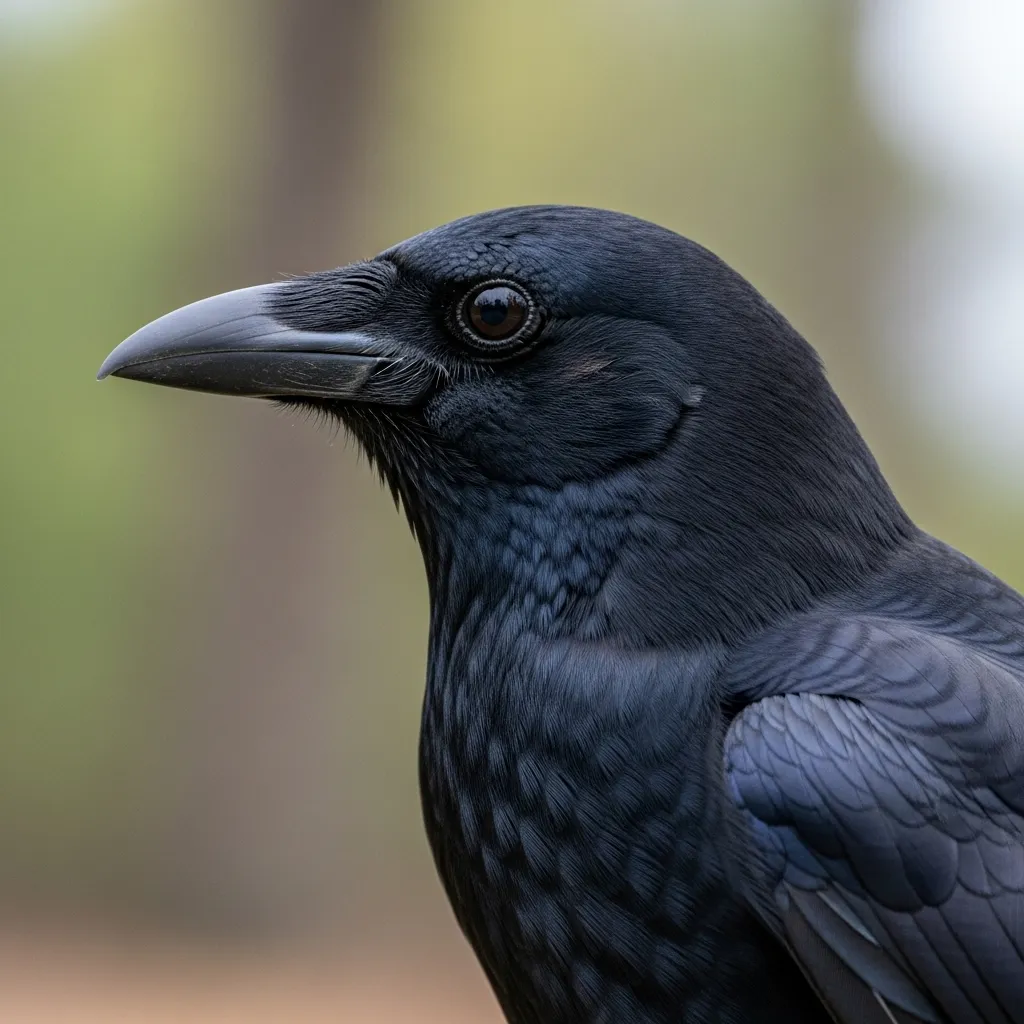
Who Are the Crows? A Quick Guide to These Common Corvids
Before we delve into their cognitive feats, it’s important to understand who we’re talking about. Crows belong to a family of birds called Corvidae, a group renowned for its intelligence that also includes ravens, jays, magpies, and nutcrackers. The term “corvid” is often used by ornithologists as a shorthand for any member of this clever family.
When most people in North America refer to a “crow,” they are typically thinking of the American Crow (*Corvus brachyrhynchos*). This species is widespread, adaptable, and a perfect subject for understanding bird intelligence in your own backyard. Learning to identify them is the first step toward appreciating their behavior.
Key Identification Field Marks
Field marks are the specific physical or behavioral traits birders use for positive identification. For the American Crow, the key marks are straightforward:
Size and Shape: An American Crow is a large bird, typically measuring 16 to 21 inches (40-53 cm) from bill to tail. They have a stout body, a thick neck, and a bill that is heavy but not overly massive. In flight, their wings are broad and rounded at the tips.
Color: They are entirely black, from their bill to their feet. In the right light, their plumage can show an iridescent purplish gloss, but from a distance, they appear uniformly black.
Tail Shape: This is a crucial field mark, especially when distinguishing them from their larger cousins. When a crow is in flight, its tail feathers form a neat, squared-off fan shape.
Vocalization: The classic sound is the familiar, loud “caw-caw-caw.” They produce a wide variety of other clicks, rattles, and coos, but the “caw” is their signature call.
A Common Point of Confusion: Crow vs. Raven
One of the most frequent identification challenges for observers is telling a crow from a Common Raven (*Corvus corax*). They are both large, black corvids, but with a little practice, you can easily tell them apart. Here is a quick mini-example of what to look for:
Imagine two large black birds flying overhead. The first one has a tail that looks like a fan, and its flight is characterized by steady, methodical wing beats. It calls out with a clear “caw.” This is an American Crow.
The second bird is noticeably larger, with a longer, wedge-shaped tail that comes to a point. Its flight is more acrobatic, often incorporating glides and soaring. As it flies, it lets out a deep, gurgling “gronk-gronk” or a gravelly croak. This is a Common Raven. Ravens also have shaggy feathers on their throat, called hackles, which are visible up close.
Remember this simple rhyme: “Crow’s a fan, Raven’s a wedge.” Looking at the tail shape in flight is the most reliable way to distinguish them from a distance.
Crows are ecological generalists. Their diet is incredibly varied, including insects, seeds, fruits, carrion, and human refuse. This adaptability is a key reason for their success in habitats ranging from dense forests to bustling city centers. They play an important role as scavengers, cleaning up the environment, but their intelligence is what truly sets them apart from other smart animals.















